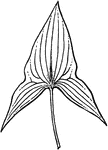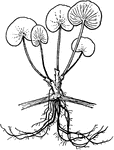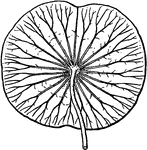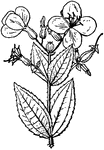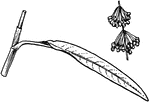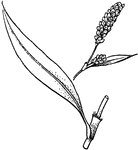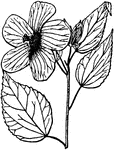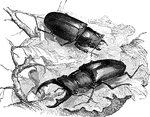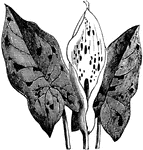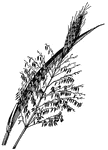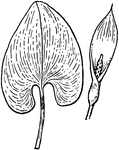
Pontederia
Leaves with blunt lobes; flower conspicuous, purple, not on a fleshy axis enclosed in a leaf-like sheath.

Peltandra
Leaves usually with sharp lobes; flowers individually inconspicuous, on a fleshy axis snclosed in a…
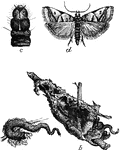
Acrobasis
"a, case containing caterpillar; b, cases in winter; c, head and thoracic joints of larva, enlarged;…

Orontium
Plants smaller; not wite-powdery above; leaves shed water easily; flowers along fleshy spike enclosed…

Gratiola
Leaves small, mostly under 3cm long; usually with black dots visible with a lens covering them.
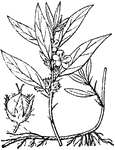
Hydrolea
Sepals united at base into a tube enclosing the ovary and later the fruit; leaves with spines in axils.
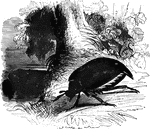
Cockchafer
"In the common European Cock-Chafer, Melolontha vulgaris, they are of considerable length,…

Processionary Caterpillars
"If the guide stops a moment all the followers halt; if he continues the route, they all hasten after…
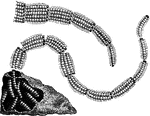
Processionary Caterpillars
"If the guide stops a moment all the followers halt; if he continues the route, they all hasten after…
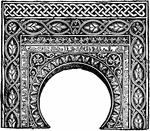
Arabesque Archway
"Arabesque is a style of ornamentation in which are represented men, animals (the latter consisting…
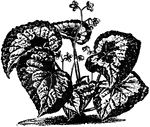
Begonia Rex
"Begonia is an extensive genus of succulent-stemmed herbaceous plants, order Begoniaceæ, with…
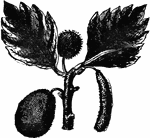
Breadfruit
"The breadfruit is a large, globular fruit of a pale-green color, about the size of a child's head,…

Breadfruit Fruit
"The breadfruit is a large, globular fruit of a pale-green color, about the size of a child's head,…
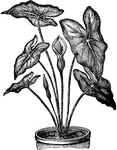
Caladium
"Caladium is a genus of endogenous plants, the typical one of the family caladieæ. They are cultivated…
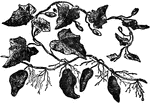
Convolvulus
"Convolvulus are a genus of plants, common in fields and hedges, especially when the soil is light.…

Date Palm
"Date Palm is a genus of palms, the most important species of which is the common date palm, the palm…
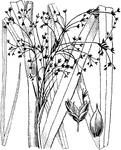
Cladium
Spikelets with the uppermost scale only enclosing an achene; our commonest species has saw-edged. cutting…

Hedgehog
"Hedgehog is a quadruped distinguished by having the body covered with spines instead of hair. The skin…
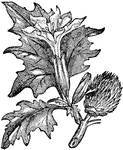
Thorn Apple
"Thorn Apple is a genus of plants. The common thorn apple is an annual plant, with smooth stem and leaves,…
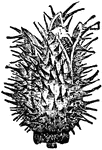
Thorn Apple Bud
"Thorn Apple is a genus of plants. The common thorn apple is an annual plant, with smooth stem and leaves,…

Tussock Grass
"Tussock Grass is a large grass, same genus with the cock's-foot grass of the United States; native…

Valerian
"Valerian is an order of herbs or rarely shrubs belonging to the division of monopetalous dicotyledons…
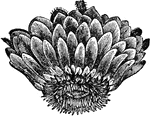
Victoria Regia
"Victoria Regia, named by Lindley after Queen Victoria, is the most magnificent of all known water lilies,…
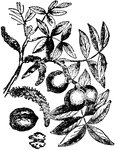
Walnut
"Walnut is a genus comprising seven or eight species of beautiful trees. The common walnut is a native…

Hemlock Water Dropwort
"Water Dropwort is a genus of plants of the natural order Umbelliferæ. A number of species are…

Wormwood
"Wormwood is the genus Artemisia. The stem is one to three feet high, grooved, and angled; the leaves…

Yucca
"Yucca is a genus of American plants, natural order Liliaceæ popularly known as Adam's needle.…
